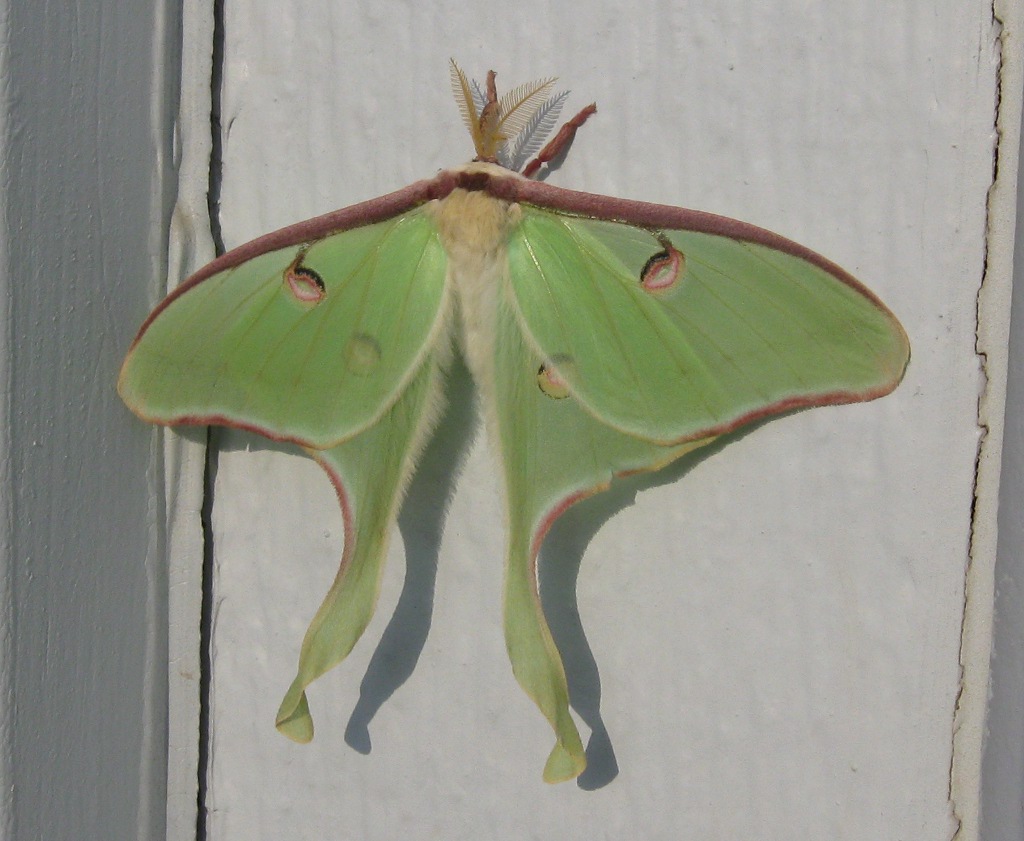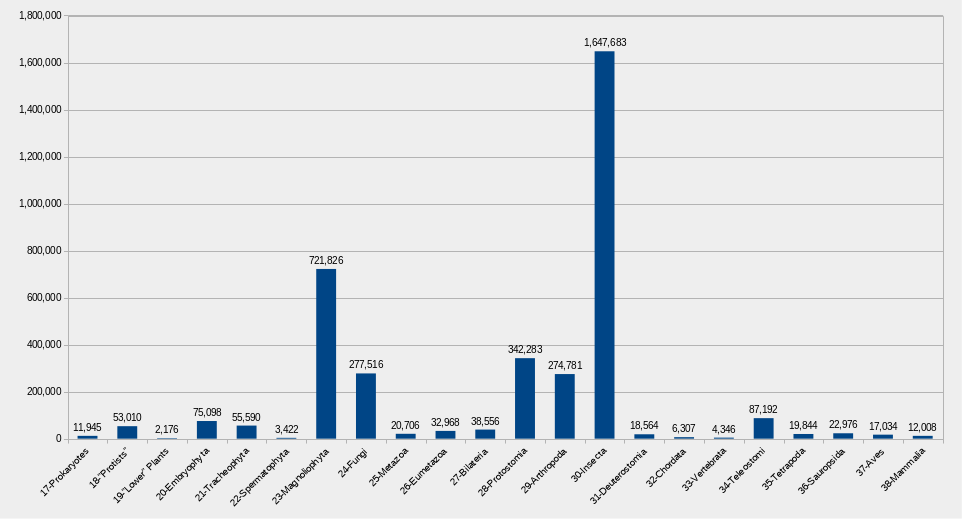
INSECTA
Insects
Chapter Outline
- Description of Insecta
- Classification of Insecta
- Archaeognatha & Zygentoma
- Pterygota
- Neoptera
- Dictyoptera
- Orthoptera
- Paraneoptera
- Endopterygota
- Diptera
- Hymenoptera
- Lepidoptera and Trichoptera
- Coleoptera

Links to external sites will appear in pop-up windows.
Insecta is the class within the phylum Arthropoda that contains the insects. Arthropoda as a whole, which was started in the last chapter, contains over half of all known organisms (over 51%) and Insecta makes up over 85% of Arthropoda. This one class of organisms, which is the focus of this chapter, makes up 44% of all living things on its own.
Looking at a graph showing the number of species in each biodiversity chapter of this guide [Fig. 1], you can see that no other chapter comes close to covering the amount of species found in Insecta. The chapter with the second-most species is 23-Magnoliophyta, which contains all the flowering plants, and it does not contain even half of the species that Insecta does. Chapter 28-Protostomia discusses 24 different animal phyla, including the relatively large Mollusca, Annelida and Nematoda, and only contains about 20% of the species as Insecta. Remember, Insecta is one class within one phylum.

Figure 1: Biodiversity chapters of this guide are along the X-axis and the number of species for each chapter is the Y-axis.
Source data: Catalogue of Life, 4/15/2024
As of 2024, 31,296 species of Insecta have been observed in iNaturalist in the US and 151,743 throughout the world.
The goal of this chapter, more than any other in the Experiencing Life series, is to experience a few things from each order of Insecta rather than delving much deeper into the family level or more specific. Insects live everywhere, so experiencing them can happen easily in your own back yard. But some types are more rare and you'll need to venture out to environments different than you may be used to.
Resources:
|
| [ Previous Page ] | [ Next Page ] |